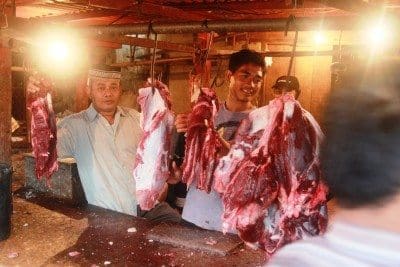The question of how Indian buffalo meat imports to Indonesia may impact Australian cattle and beef exports to the country is about to be put to the test, it seems.
The first shipment of Indian buffalo meat recently arrived in the country, and the Indonesian Government’s procurement agency Bulog has just announced that it has now signed an agreement to import a total of 80,000 tonnes of buffalo meat from India in 2016.
As has been well documented in recent months, the Indonesian government recently relaxed the restrictions it places on importing beef from countries affected by foot and mouth disease in order to improve its access to cheaper meat.
Indonesia is hoping to increase supply and bring down beef prices for consumers, which have risen on the back of restrictions placed by the Government on beef and cattle imports in recent years.
At the same time as it is opening its borders to beef from more sources, the Indonesian Government is also trying to improve self-sufficiency of beef production in Indonesia, offering incentives to importers to bring in more breeding cattle.
Bulog procurement director Wahyu told Indonesian media on Friday a new deal with India would bring Indonesia’s total buffalo meat imports to 80,000 tonnes in 2016.
President Joko Widodo has said he wants fresh beef to cost around 80,000 rupiah per kilogram.
Indonesian trade ministry data suggests beef currently costs around 115,000 rupiah per kilogram.
The first shipment of about 720 tonnes of buffalo meat from India recently arrived in the country.
Bulog expects the remainder of the first 10,000 tonne order to be imported by the end of September.
Bulog is selling the Indian buffalo meat for 65,000 per kg at a consumer level.
The buffalo meat will be sold in traditional markets in Greater Jakarta. Bulog has specified that market vendors can only buy the meat from several associations which have agreed to partner with it in order to distribute the imported buffalo meat and keep the price under control.
These included the Indonesian Beef Traders Association (Apdasi), the Indonesian Meat Importers Association (Aspidi) and the Indonesian Meat Distributors Association (ADDI).
Apart from the aforementioned scheme, the Jakarta Post said Bulog planned to sell the buffalo meat directly to the market in a bid to prevent vendors selling the commodity above the threshold price.
Bulog staged a media event in its main hall last Friday where it gave hundreds of its employees the opportunity to taste various dishes made from buffalo meat imported from India.
The Jakarta Post said the Indonesian government was confident it could convince the public to use buffalo meat, given several regions in the country already eat buffalo-based meals.
In Kudus, Central Java, people use buffalo meat to make traditional dishes such as soto Kudus (soup) and sate Kudus. Buffalo meat is also suitable for making the well-known rendang (beef simmered in coconut milk and spices), a traditional dish from Padang in West Sumatra.
“Buffalo meat can serve as an alternative commodity, which is healthy and cheap,” Bulog president director Djarot Kusumayakti told reporters.
Renowned chef Chandra Yudasswara, who cooked buffalo-based dishes including stew, lasagna and steak at the event on Friday, said there was no real difference between buffalo meat and beef, as both of them required slow-cooking techniques.
He said, however, that it would take time for the government to convince the public to consume buffalo meat, saying “it is likely to be difficult for people to move on from consuming beef”.
Indonesia was the fifth largest export market for Australian boxed beef and the biggest market for Australian live cattle in 2015.
In 2015, Australian beef exports to the market declined to 39,134 tonnes swt (down 26pc from 2014), while live cattle exports in 2015-16 financial year totalltd 566,000 head, down from 740,000 head in 2014-15.

